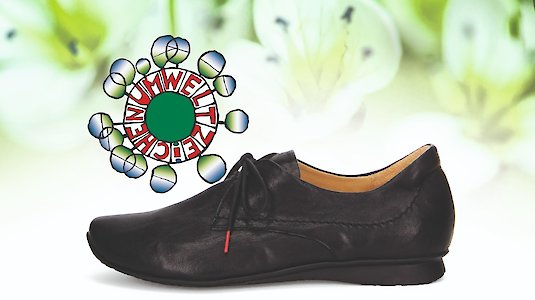Where do our shoes come from?
49 million pairs of shoes are bought in Austria every year. During the production process very often exploitation of labour, health hazards and environmental pollution are negative effects.
14 billion pairs of leather shoes are produced each year, women buy two to three times as many shoes as men. The majority is produced in Asian factories, with China occupying the top position among producers with 8 billion pairs. For comparison: In Austria, about 1.8 million pairs of shoes are produced annually. One of the biggest problems in shoe producing countries are the low wages. Even if workers are paid the legal minimum wage, they often cannot live on it. In China, the minimum wage is only half of what would be necessary for a decent life, in Bangladesh only one fifth. In the south of India it is mainly women, but also whole families, who sew their shoes together in home-work. A maximum of 20 cents is paid for each pair of shoes made, and a sewer makes around ten pairs a day. The situation in the shoe factories is no better: people work eight hours a day for six days a week, for a maximum monthly wage of 70 euros.
Health hazard of chrome
The leather for our shoes often comes from cattle farms in Brazil, where workers are kept in a slave-like status and rainforests are cut down for pasture land. In India, one of the largest countries producing cattle skins, there is cruel mistreatment of cattle (see Consumer 4/2012). And last but not least, chrome is usually used in the manufacture of leather shoes: tanning with chrome oxides is the most common method worldwide, although it involves risks for the environment and health. It is particularly hazardous to health if it leads to the undesirable formation of chromium trioxide compounds. According to the German Federal Environment Agency, the production of 500 kilograms of leather generates an average of up to 250 kilograms of chemicals. Conditions are particularly bad for workers in India, Bangladesh and Nepal. 40 percent of tannery workers suffer from skin diseases, asthma or other impairments. High concentrations of chromium have been found in the groundwater and soil around Indian tanneries, caused by the "disposal" of cattle skins with the waste water still heavily contaminated with chromium.
Shoes with the Austrian Ecolabel are intensively tested during the finishing process to guarantiee that the production of the raw materials is proven to be environmentally friendly. Demanding social criteria in production leads to excellent product quality without endangering the health of the consumer.
Shoes that have been awarded the Austrian Ecolabel,
- consist of chrome-free tanned leather,
- are produced without PVC and perflourized chemicals,
- Contain only small amounts of other chemicals or heavy metals that are harmful to health or the environment,
- are sewn and glued in factories whose occupational safety and social conditions meet high standards and
- Arise in a production process that meets comprehensive environmental standards and has a lower consumption of water and chemicals.
The "Chilli Schnürer" shoe of the Austrian brand Think! (a subsidiary of Legero comp.), are the first shoes to be awarded the Austrian Ecolabel. For more information, see also the "Change your Shoes" campaign of the Clean Clothes campaign.
Links http://www.cleanclothes.at/schuhe/ https://www.global2000.at/change-your-shoes
Consumer: "Chilli Schnürer" http://www.konsument.at/cs/Satellite?pagename=Konsument/MagazinArtikel/Detail&cid=318894994950
Consumer: Children's shoes http://www.konsument.at/cs/Satellite?pagename=Konsument/MagazinArtikel/Detail&cid=318896859903
